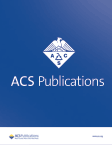Abstract PO2-12-05: Scalp Cooling with the Capelli System to Reduce Doxorubicin-induced Alopecia in Patients with Localized Breast Cancer: A Phase 2 Randomized Controlled Trial
IF 2.9
Q2 PUBLIC, ENVIRONMENTAL & OCCUPATIONAL HEALTH
引用次数: 0
Abstract
Introduction: Chemotherapy-induced alopecia (CIA) is a distressing side effect of breast cancer (BC) treatment. Scalp cooling (SC) devices have shown promise in reducing the severity of CIA. However, the impact of reducing alopecia occurrence on the quality of life of Brazilian patients remains unclear. Objectives: This study aimed to assess the effectiveness of the Capelli System, a new SC device, in reducing CIA. Methods: This was a single-center, controlled, randomized phase 2 clinical trial involving women with TNM stage I to III BC undergoing neoadjuvant or adjuvant doxorubicin-based chemotherapy (AC regimen: doxorubicin 60 mg/m² plus cyclophosphamide 600 mg/m², i.v., q21 days), with or without a taxane (paclitaxel or docetaxel). Participants were randomized in a 1:3 ratio into the scalp cooling (n = 33) or control (n = 12) groups. All participants were advised to cut their hair short and avoid heat-inducing tools or processes throughout chemotherapy, using cold or lukewarm water and wide-toothed combs for hair washing. The primary efficacy endpoint was grade 2 alopecia (>50% hair loss or hair shaving due to alopecia) after 4 cycles of AC. Secondary endpoints included measures of hair loss distress (BRHL) and body image (BRBI) from the EORTC Quality of Life Questionnaire - Breast Cancer Module (EORTC QLQ-BR23), as well as symptoms of anxiety and depression from the Hospital Anxiety and Depression Scale (HADS). Fitzpatrick phototype and hair type were assessed. Statistical analyses utilized generalized linear models and Fisher's Exact test (p-value < 0.05). Results: Patients were enrolled from October 11, 2019, to January 17, 2022. Out of the 45 patients included, 8 were excluded: 2 due to intolerance, 1 with alopecia associated with COVID-19, and 5 who withdrew consent (2 with grade 2 headache, 3 without justification). The median age was 44.6 (min-max: 23-63) years, with 18 (40%) and 27 (60%) receiving adjuvant and neoadjuvant chemotherapy, respectively. Grade 2 alopecia or hair shaving occurred in 52% of scalp cooling patients and 100% of controls (p = 0.003), demonstrating a significant 48% reduction in alopecia. There were no significant differences in HADS-A, HADS-D, BRHL, or BRBI scores between the two groups. Alopecia occurrence did not show significant associations with skin or hair types. No serious adverse events related to the scalp cooling device were reported. Conclusions: SC with the Capelli System significantly reduced CIA by half. Some patients experienced discomfort or headaches and discontinued device use. Further research is needed to understand why reduced alopecia rates do not correlate with improvements in body image or reduced hair loss distress. Citation Format: Carlos Paiva, Fabiola Dias, Angelo Matthes, Bianca Paiva, Cristiano Souza, Domício Lacerda, Augusto Antoniazzi, Maria Fernanda Machado, Matheus Godinho, Crislaine de Lima, Cristiane Cárcano, Marina Zorzetto. Scalp Cooling with the Capelli System to Reduce Doxorubicin-induced Alopecia in Patients with Localized Breast Cancer: A Phase 2 Randomized Controlled Trial [abstract]. In: Proceedings of the 2023 San Antonio Breast Cancer Symposium; 2023 Dec 5-9; San Antonio, TX. Philadelphia (PA): AACR; Cancer Res 2024;84(9 Suppl):Abstract nr PO2-12-05.摘要 PO2-12-05:使用卡佩利系统进行头皮降温以减少局部乳腺癌患者由多柔比星引起的脱发:2期随机对照试验
简介化疗引起的脱发(CIA)是乳腺癌(BC)治疗过程中令人痛苦的副作用。头皮冷却(SC)设备有望减轻化疗引起的脱发的严重程度。然而,减少脱发对巴西患者生活质量的影响仍不清楚。研究目的本研究旨在评估新型头皮冷却设备 Capelli 系统在减轻 CIA 方面的效果。方法:这是一项单中心对照研究:这是一项单中心、对照、随机的二期临床试验,涉及接受以多柔比星为基础的新辅助化疗或辅助化疗(AC 方案:多柔比星 60 毫克/平方米加环磷酰胺 600 毫克/平方米,静脉注射,q21 天)的 TNM I 期至 III 期 BC 女性患者,无论是否使用类固醇类药物(紫杉醇或多西他赛)。参与者按 1:3 的比例随机分为头皮冷却组(33 人)或对照组(12 人)。所有参与者都被建议剪短头发,在整个化疗过程中避免使用发热工具或过程,使用冷水或温水以及宽齿梳子洗头。主要疗效终点是接受 4 个周期 AC 后的 2 级脱发(脱发率大于 50%,或因脱发而剃发)。次要终点包括EORTC生活质量问卷--乳腺癌模块(EORTC QLQ-BR23)中的脱发困扰(BRHL)和身体形象(BRBI)测量指标,以及医院焦虑抑郁量表(HADS)中的焦虑和抑郁症状。还对 Fitzpatrick 光型和毛发类型进行了评估。统计分析采用了广义线性模型和费雪精确检验(p 值小于 0.05)。结果患者入组时间为 2019 年 10 月 11 日至 2022 年 1 月 17 日。在纳入的 45 名患者中,有 8 人被排除在外:2例因不耐受,1例因与COVID-19相关的脱发,5例撤回同意(2例因2级头痛,3例无正当理由)。中位年龄为 44.6 岁(最小-最大:23-63 岁),分别有 18 人(40%)和 27 人(60%)接受了辅助化疗和新辅助化疗。52%的头皮冷却患者和100%的对照组患者出现了2级脱发或剃发(P = 0.003),表明脱发率显著降低了48%。两组患者的 HADS-A、HADS-D、BRHL 或 BRBI 评分无明显差异。脱发的发生与皮肤或毛发类型没有明显关联。没有与头皮冷却装置相关的严重不良事件报告。结论使用卡佩利系统进行头皮冷却后,CIA明显减少了一半。一些患者感到不适或头痛,因此停止了设备的使用。需要进一步研究,以了解为什么脱发率的降低与身体形象的改善或脱发困扰的减少无关。引用格式:Carlos Paiva, Fabiola Dias, Angelo Matthes, Bianca Paiva, Cristiano Souza, Domício Lacerda, Augusto Antoniazzi, Maria Fernanda Machado, Matheus Godinho, Crislaine de Lima, Cristiane Cárcano, Marina Zorzetto.使用卡佩利系统进行头皮冷却以减少局部乳腺癌患者由多柔比星引起的脱发:2期随机对照试验[摘要]。In:2023 年圣安东尼奥乳腺癌研讨会论文集;2023 年 12 月 5-9 日;德克萨斯州圣安东尼奥。费城(宾夕法尼亚州):AACR; Cancer Res 2024;84(9 Suppl):Abstract nr PO2-12-05.
本文章由计算机程序翻译,如有差异,请以英文原文为准。
求助全文
约1分钟内获得全文
求助全文
来源期刊

ACS Chemical Health & Safety
PUBLIC, ENVIRONMENTAL & OCCUPATIONAL HEALTH-
CiteScore
3.10
自引率
20.00%
发文量
63
期刊介绍:
The Journal of Chemical Health and Safety focuses on news, information, and ideas relating to issues and advances in chemical health and safety. The Journal of Chemical Health and Safety covers up-to-the minute, in-depth views of safety issues ranging from OSHA and EPA regulations to the safe handling of hazardous waste, from the latest innovations in effective chemical hygiene practices to the courts'' most recent rulings on safety-related lawsuits. The Journal of Chemical Health and Safety presents real-world information that health, safety and environmental professionals and others responsible for the safety of their workplaces can put to use right away, identifying potential and developing safety concerns before they do real harm.
 求助内容:
求助内容: 应助结果提醒方式:
应助结果提醒方式:


